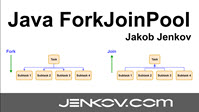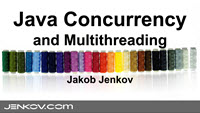Java's java.sql.Timestamp
Jakob Jenkov |
Java's java.sql.Timestamp class is used in the JDBC API. If you
need to set a date + time on a java.sql.PreparedStatement or get a date + time
from a java.sql.ResultSet, you will interact with
java.sql.Timestamp.
Actually, java.sql.Timestamp extends
java.util.Date, so anything you can
do with a java.util.Date you can also do with a java.sql.Timestamp.
Check out java.util.Date for more details.
The biggest difference between java.sql.Date and java.sql.Timestamp
is that the java.sql.Date only keeps the date, not the time, of the date
it represents. So, for instance, if you create a java.sql.Date using
the date and time 2009-12-24 23:20, then the time (23:20)
would be cut off. If you use a java.sql.Timestamp then the time is kept.
Nanoseconds
One difference in the java.sql.Timestamp from its superclass java.util.Date
is its ability to hold the nanoseconds of a date too. You can get and set the nanoseconds using
the getNanos() and setNanos(). Here is how:
long time = System.currentTimeMillis(); java.sql.Timestamp timestamp = new java.sql.Timestamp(time); timestamp.setNanos(123456); int nanos = timestamp.getNanos(); // nanos = 123456
| Tweet | |
Jakob Jenkov | |











